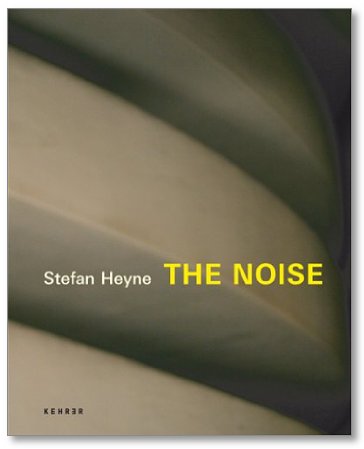 Stefan Heyne's The Noise is aptly named. His images give the impression of being situated between two states, like the static between radio stations. Their subjects, a window, the keel of a boat, a doorway, a phone, are still recognizable but are reduced to the most basic forms emerging from the surrounding darkness. Heyne uses blur to create these abstractions of simple objects in such a way that there is little that is obviously 'photographic' about these images. The essays in the book refer to Gerhard Richter's photorealistic paintings and Heyne's images feel like a similar exploration of the boundary between painting and photography.
Stefan Heyne's The Noise is aptly named. His images give the impression of being situated between two states, like the static between radio stations. Their subjects, a window, the keel of a boat, a doorway, a phone, are still recognizable but are reduced to the most basic forms emerging from the surrounding darkness. Heyne uses blur to create these abstractions of simple objects in such a way that there is little that is obviously 'photographic' about these images. The essays in the book refer to Gerhard Richter's photorealistic paintings and Heyne's images feel like a similar exploration of the boundary between painting and photography.
The Noise is a collection of controlled experiments at the edge of photography. These are not happy accidents or ultra-loose snapshots, but very deliberate images made which question the nature of photography and of our perception. In some ways this feels like anti-photography, rejecting the sharpness and the detail that is is often equated with photographic perfection in favour of out-of-focus hard-to-read images. Even though Heyne may be deep into uncharted territory, these images are still fundamentally about photography, even though it is a corner of it that few of us spend much time in.
Other adventurous types have wandered into this remote area before, Hiroshi Sugimoto's double-infinity series comes to mind, but Heyne's images feel more purposeful. Less 'let's see what happens' than complex visual conundrums. The images all seem to be emerging from pitch-blackness, as if they were shot from the window of a deep-sea submarine, just short glimpses of a passing object that is already drifting back into the silence and the darkness. And yet, despite all of this I found that the austerity of these images made it difficult to penetrate into this world.
I was surprised to see that Heyne's titles give information about their subjects, although at times this is so general that it reveals little. With abstract photography, I often find that my vision oscillates between focusing on the object being photographed and 'accepting' the form and texture of the abstraction. Because of this I found the titles to be distracting as they keep the images anchored to their subjects, instead of allowing them to move into a different realm.
I am not convinced that the photobook is the best space for this work. The book's three essays (were three really necessary?) refer to Heyne's prints on several occasions and I have the feeling that this work may work better the form of individual images at a large scale.
This is intriguing, adventurous and difficult work that is more of a visual and conceptual work-out than a feast.
Stefan Heyne, The Noise: The Exposure of the Uncertain, (Heidelberg: Kehrer Verlag, Hardback, 267 x 222 mm, 96 pp, 45 colour plates, 2008).
Rating: Worth a look

